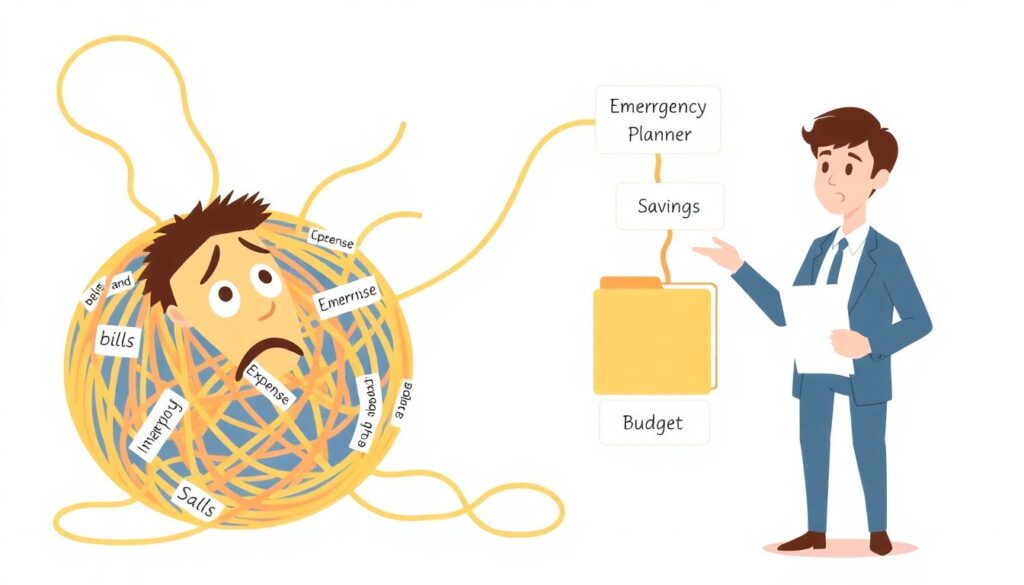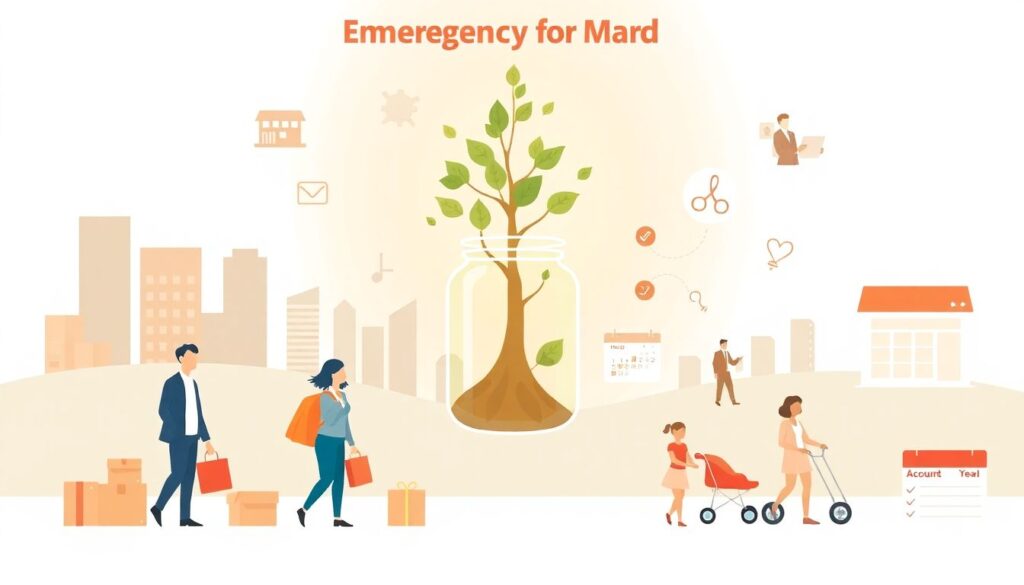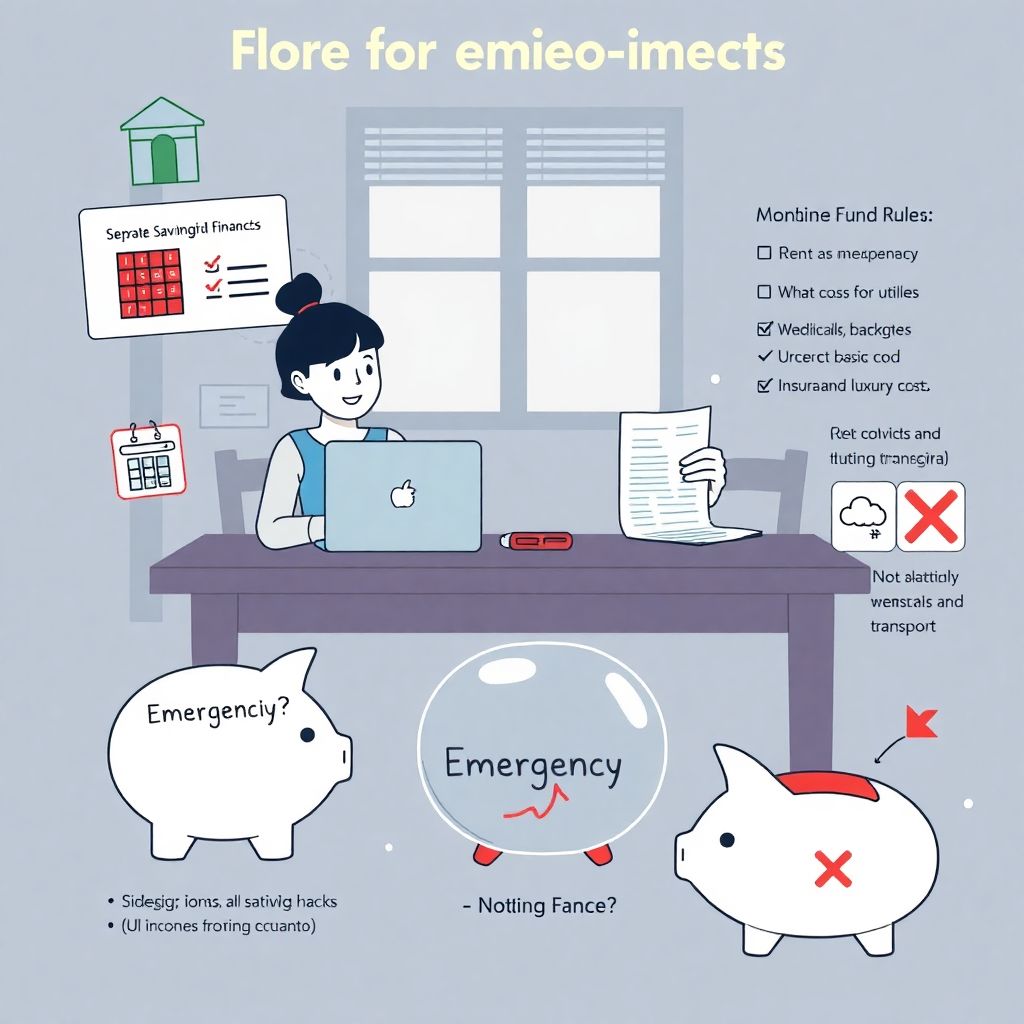Preparing for financial emergencies sounds grim, but think of it more like installing a fire alarm: a bit boring today, incredibly useful the one day you need it. Instead of vague advice about “saving more,” let’s walk through a concrete, step‑by‑step guide you can actually follow, with a few unconventional tricks along the way. The goal is not to live in fear of worst‑case scenarios, but to buy yourself time, options and psychological breathing room when life throws a curveball. You’ll set up tools, run a simple plan, and learn how to fix things if you drift off track.
—
Core Tools You Need Before Anything Else
Before you obsess over “emergency fund how much should I save,” you need a small toolkit. First is a separate, easily accessible account that’s not tied to your everyday spending. Many people use the best high yield savings account for emergency fund purposes, because it gives decent interest while remaining liquid. Second is a tracking method: an app, a spreadsheet, or even a notebook where you log income, fixed costs and variable expenses. Finally, you need a “ruleset”: clear, written conditions for when you’re allowed to touch emergency money, so you don’t dip into it for concert tickets or gadgets that feel urgent but aren’t.
—
Digital Helpers and Calculators
You don’t have to guess your numbers. An emergency fund calculator online can take your monthly expenses, job stability and number of dependents, and spit out a target range in seconds. Use at least two different calculators and compare results; think of them as weather forecasts, not absolute truth. Then adjust for your reality: if your income is unstable or you’re self‑employed, lean toward the higher recommendation; if you have strong family support or multiple income streams, the lower end may be enough. Save the screenshots or numbers in a note, so your target isn’t a vague memory but a documented goal you can revisit and revise every year.
—
Step 1: Define What “Emergency” Actually Means
Most people never write this down, and that’s why their safety cushion mysteriously disappears. Spend ten minutes making a “yes/no” list. Genuine emergencies usually include: job loss, medical bills, urgent car or home repairs, sudden relocation, or helping a close family member survive a crisis. Non‑emergencies: vacations, weddings, gifts, elective upgrades and impulse tech. Put this list in your notes app or tape it inside a closet. When a big expense appears and your emotions flare, you compare it with the list instead of deciding on the spot. This reduces “heat‑of‑the‑moment” decisions and keeps your fund from becoming a lifestyle subsidy.
—
Step 2: Calculate Your Survival Number
Forget perfection; start with “bare‑bones” living costs: rent or mortgage, utilities, basic food, insurance, transport, and minimum debt payments. Leave out dinners out, subscriptions and non‑essential shopping. Add these up for one month. Now ask again: emergency fund how much should I save if hours get cut or I’m between jobs? Many experts say three to six months of essentials, but you can be more scientific. Rate your job security and industry volatility on a 1–5 scale; the shakier it looks, the more months you aim for. The result gives you a number that isn’t random but grounded in your actual life.
—
Step 3: How to Build an Emergency Fund from Scratch
If you’re starting at zero, motivation is fragile, so shrink the first milestone. Instead of chasing six months right away, target your first 500 or 1,000 dollars (or local currency). Break it into weekly chunks: “I need 20–30 a week” is psychologically easier than “I need thousands.” Automate transfers the day after payday, so the money moves out before you see it. To jump‑start, run a “30‑day cash harvest”: cancel or pause every non‑essential subscription, sell three unused items, and funnel any windfall directly into savings. This creates a sense of visible progress in weeks, not years, which makes you more likely to stick with it.
—
Unconventional Income and Savings Hacks
Standard advice says “spend less, earn more,” but that’s vague. Try specific, time‑boxed experiments. For one month, treat every inconvenience as a micro‑job: pet‑sitting, tutoring, proofreading, food delivery on just one fixed evening per week. Label earnings in your app as “emergency buffer only,” reinforcing the mental barrier. On the savings side, use “friction”: delete stored cards from shopping sites, enforce a 48‑hour wait on purchases above a set amount, and keep part of your fund in a separate bank for an extra login step. These mild annoyances are enough to block many impulse withdrawals, while still allowing quick access when it’s truly necessary.
—
Step 4: Where to Park the Money Safely
Your emergency fund must balance three things: safety, liquidity and at least minimal growth. Risky investments like individual stocks or volatile crypto fail the first two tests; they can drop just when you need cash. That’s why people often look for the best high yield savings account for emergency fund parking: it’s typically insured, easy to access within a day or two, and pays better interest than a checking account. Another option is a money market account or a very short‑term government bond fund, but only if you clearly understand settlement times and potential small price swings. The priority is reliability, not chasing maximum yields.
—
Step 5: Add Professional Support (Optional but Powerful)

If your finances feel like a tangled ball of yarn, outside guidance can speed things up. Many firms now offer financial planning services for emergency preparedness as a focused, one‑time engagement rather than a lifetime commitment. A planner can stress‑test your situation: What if you’re out of work for nine months? What if a partner gets sick? They model scenarios you might not think of and suggest insurance tweaks, backup credit options and optimal account choices. For a more budget‑friendly route, look for nonprofit counseling agencies or community financial clinics that provide low‑cost or even free sessions, especially if you’re dealing with debt alongside emergency planning.
—
Step 6: Run “Emergency Drills” Once a Year
Borrow a trick from disaster management: simulate a crisis before it happens. Once a year, pick a weekend to run a financial fire drill. Assume you’ve just lost your main income. Ask: which bills could I pause, renegotiate or cancel in the first week? How quickly can I access my emergency account? Do I know how unemployment benefits or local aid programs work? Write down the order of actions you’d take over the first 72 hours and first 30 days. This turns vague anxiety into a rehearsed plan. It also reveals weak spots—like not knowing account logins or relying on paper documents stored in one place.
—
Troubleshooting: When Your Plan Goes Off the Rails
Real life rarely follows the script, so expect setbacks. If you keep dipping into your fund for non‑emergencies, treat it as a signal, not a failure. Maybe your regular budget is unrealistically tight, forcing you to “borrow” from savings; in that case, revisit expenses and add a small “fun buffer” line to reduce temptation. If you can’t save at all some months, switch to a “percent of any extra” rule instead of fixed amounts. Even 10% of irregular income or small bonuses keeps the habit alive. The key is to keep the system flexible enough that it bends rather than breaks when circumstances change.
—
Advanced Tricks for Persistent Problems
If progress stalls for more than three months, try changing the game instead of blaming willpower. Create a “no‑zero days” rule: every day, move at least a token amount—maybe the value of a coffee—into your emergency account, even if you move it back later for a true crisis. This builds identity: “I’m someone who protects future‑me.” As an extra layer, set up a tiny line of credit or low‑limit card reserved only for emergencies, then promise yourself it’s used only after the fund is emptied. Paradoxically, knowing there’s a backup often reduces anxiety and makes it easier to leave your cash fund untouched until it’s genuinely needed.
—
Keeping Your Emergency Strategy Alive

An emergency fund is not a one‑and‑done project but a living system that evolves with your life. Revisit your numbers whenever something major changes: new city, new job, kids, health issues. Each year, run a quick checkup: Is the account still in the right place? Are you on track toward your target months of expenses? Did new risks appear that your old plan ignores? By approaching this as routine maintenance rather than a permanent struggle, you remove the drama. You’re not trying to outsmart fate; you’re simply giving your future self more choices, time and dignity when circumstances get rough—and that’s the real point of financial preparedness.

